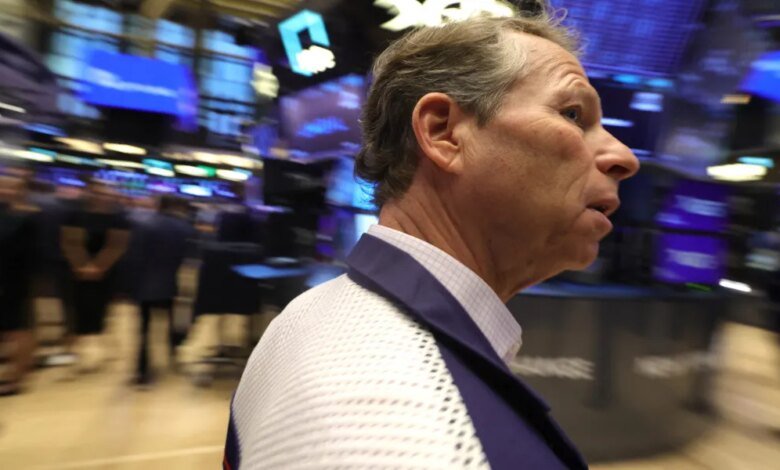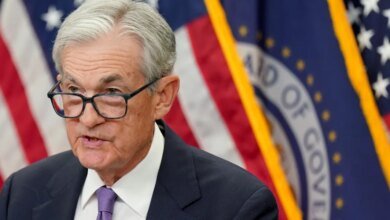Stocks’ worst swoon since fallout from Liberation Day: Trump Truth Social post on ‘massive increase of tariffs’ shatters calm

The S&P 500 fell 2.7% on its worst day since April 10. The Dow Jones Industrial Average fell 878 points, or 1.9%, and the Nasdaq Composite fell 3.6%.
Stocks were headed for slight gains in the morning, until Trump took to his social media platform and said he was considering a “massive tariff increase” on Chinese imports. He is troubled by China’s restrictions on its exports of rare earth elements, materials needed to make everything from consumer electronics to jet engines.
“We have been contacted by other countries that are very angry about this major trade hostility, which came out of nowhere,” Trump wrote on Truth Social. He also said “there now appears to be no reason” to meet Chinese leader Xi Jinping, after earlier agreeing to do so as part of an upcoming trip to South Korea.
Trump’s surprise announcement of new tariffs brought to mind the big swoon that hit stock markets in April, when the president declared “Liberation Day” with a slate of “reciprocal tariffs” for a slew of countries around the world, sending global markets plummeting. In just four days, the S&P 500 fell about 12%, and the Dow Jones Industrial Average lost nearly 4,600 points, but US indices regained all the lost ground within a month or so, as the impact of the tariffs was very different from Trump’s announcement.
However, as recently as October, Federal Reserve Governor Chris Waller, who confirmed to CNBC that he had given a “great interview” as a potential replacement for Chairman Jerome Powell, revealed how the tariffs had evolved so far: price increases for higher-income consumers as the tariffs passed, and companies swallowing the cost for any lower-income, price-sensitive shoppers. Moody’s Analytics found that nearly 50% of consumer spending in the economy comes from the richest 10% of Americans, and at the same time, the revenue from tariffs is “very large,” according to Apollo Global Management chief economist Torsten Slok.
Escalating tensions between the world’s largest economies led to widespread declines across Wall Street, with nearly six out of every seven stocks within the S&P 500 falling. Almost everything weakened, from big technology companies like Nvidia and Apple to small-cap stocks looking to weather uncertainty over tariffs and trade.
Maybe the market was ready for a slide. US stocks were already facing criticism that their prices had risen too much after the S&P 500 index rose relentlessly 35% from its lowest level in April. The index, which tracks the movements of many 401(k) accounts, remains near the all-time high it hit earlier in the week.
Critics say the market appears too expensive as prices have risen much faster than corporate profits. Concerns are particularly high about companies working in the artificial intelligence industry, where pessimists see echoes of the dot-com bubble that burst in 2000. For stocks to appear less expensive, either their prices must fall, or corporate profits must rise.
Levi Strauss stock fell 12.6% for one of the market’s biggest losses, even though it reported stronger earnings last quarter than analysts expected.
Its full-year earnings outlook was also within the range of Wall Street estimates, but the jeans and apparel company could simply face the challenge of rising expectations after a big run. Its stock price entered today with a gain of nearly 42% for the year so far.
In total, the S&P 500 index fell by 182.60 points to 6,552.51. The Dow Jones Industrial Average fell 878.82 to 45,479.60, and the Nasdaq Composite fell 820.20 to 22,204.43.
Some of the strongest action on Friday was in the oil market, where the price of a barrel of benchmark US crude oil fell 4.2% to $58.90.
It fell with the entry into force of the ceasefire between Israel and Hamas in Gaza. Ending the war could remove concerns about disruption to oil supplies, which has kept the price of crude oil higher than it would have been otherwise.
Losses accelerated in the wake of Trump’s threat of tariffs, which could hamper global trade and push the economy to consume less fuel. Brent crude, the international standard, fell 3.8% to $62.73 a barrel.
In the bond market, the yield on 10-year Treasury notes fell to 4.05% from 4.14% late Thursday.
It was already lower before Trump made his threats, with a report from the University of Michigan noting that sentiment among American consumers remains stagnant.
“Balance-sheet issues such as rising prices and poor job opportunities remain at the forefront of consumers’ minds,” says Joan Hsu, director of consumer surveys. “At this time, consumers do not expect a significant improvement in these factors.”
The labor market slowed so much that the Federal Reserve cut its key interest rate last month for the first time this year. Fed officials plan further cuts over the next year to give the economy additional breathing room. But Chairman Jerome Powell also said they may change course if inflation remains high. This is because lower interest rates can push inflation to higher levels.
One potentially encouraging sign from the University of Michigan’s preliminary survey said consumers’ expectations for inflation next year fell to 4.6% from 4.7% the previous month. While this is still high, the trend of change could help the Fed and limit upward pressure on inflation.
In overseas stock markets, indices fell in most parts of Europe and Asia.
Hong Kong’s Hang Seng fell 1.7% and France’s CAC 40 fell 1.5% in two of the bigger moves. But South Korea’s Kospi index jumped 1.7% after trading reopened after the holiday.
___
AP Writer Teresa Cerugano contributed.
2025-10-11 15:27:00




